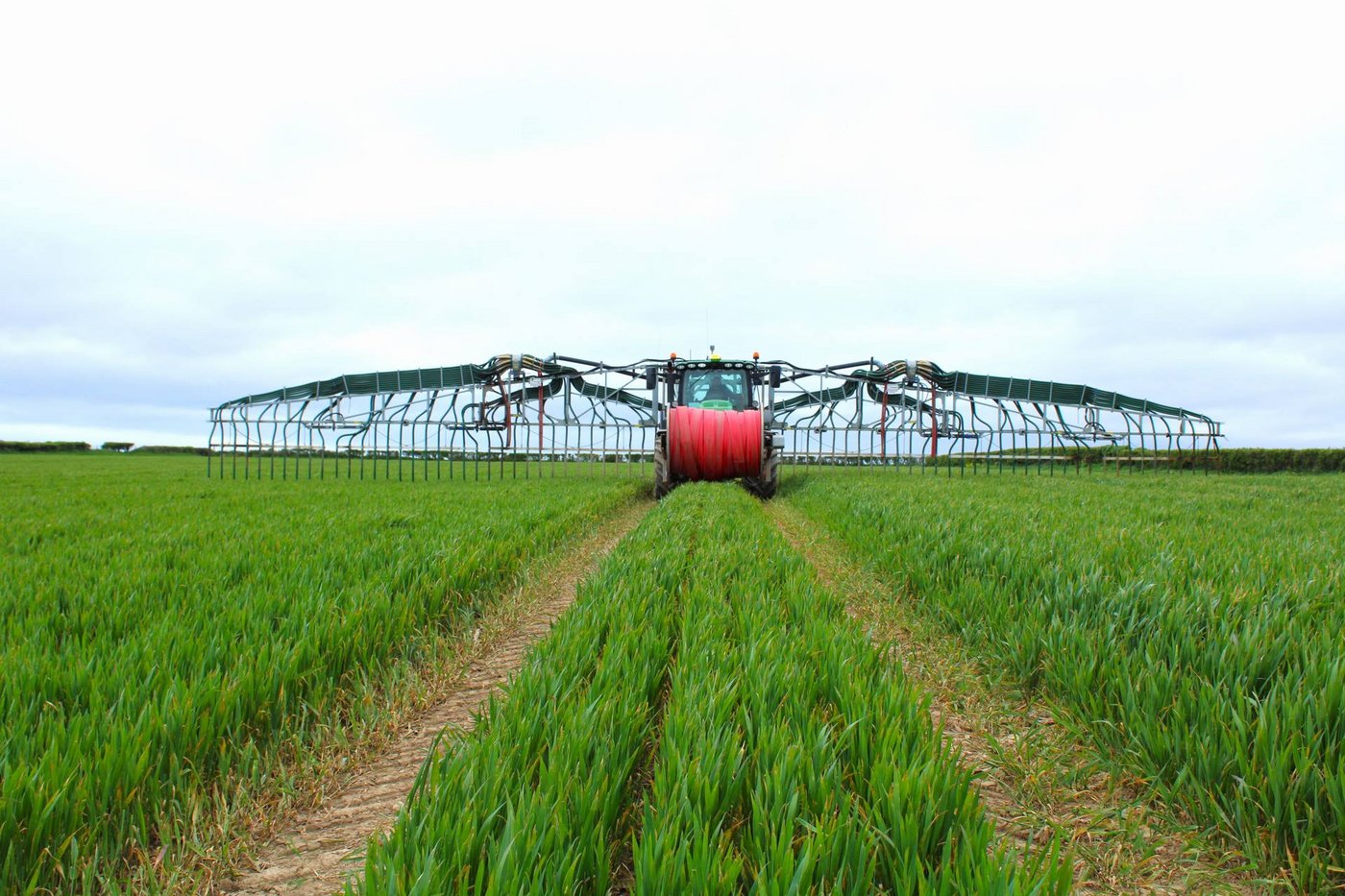BackPac: Efficient slurry management with trailing shoe system
Case Study: VJ Thomas & Sons
Problem
Previous slurry spreading methods are unsuitable for stony ground
Solution
The BackPac enables even and wide-area distribution of slurry
The customer and the problem
VJ Thomas & Sons manages Pancross Farm in Cardiff, Wales, with around 2,500 hectares of grassland and arable land. Silage, corn, and wheat are grown on the land. In order to make better use of the available nutrients and reduce the purchase of mineral fertilizers, the farm decided to take over slurry management again on its own. To this end, it invested in modern spreading infrastructure and two trailing shoe systems, each with a working width of 24 meters.
The solution
The trailing shoe systems used enable even and large-area distribution of the slurry, which is first heavily separated and thus contains less than three percent dry matter. A network of five miles of underground pipes pumps the thin slurry to hydrants, where it is fed directly into the drag hose lines. This allows 150 to 180 cubic meters per hour to be reliably transported over distances of more than a mile.
The lightweight BackPac drag hose boom plays a key role in reducing soil compaction. Thanks to its central mounting on the tractor, the boom remains particularly stable during operation, which increases accuracy. The integrated headland management system ensures that the slurry is only applied where it is needed. Another practical feature for field use is the compact folding technology, which allows the 24-meter working width to be folded up quickly and space-savingly. The 300-millimeter-long downpipes distribute the slurry evenly, so that there are no streaks or unfertilized gaps.
The combination of high area coverage, precise dosing, and easy handling made the systems the ideal solution for the conditions at Pancross Farm. The benefits are complemented by a reliable supply of spare parts, which ensures uninterrupted work during the spreading season.

Advantages
- The trailing shoe systems used enable even and large-area distribution of slurry
- Less soil compaction thanks to the lightweight design of the drag hose booms
- Precise, even nutrient distribution without streaking
- High delivery rate of 150–180 m³/h even over long distances
- High operational reliability thanks to rapid availability of spare parts
- Reduced need for mineral fertilizers and sustainable improvement of soil quality